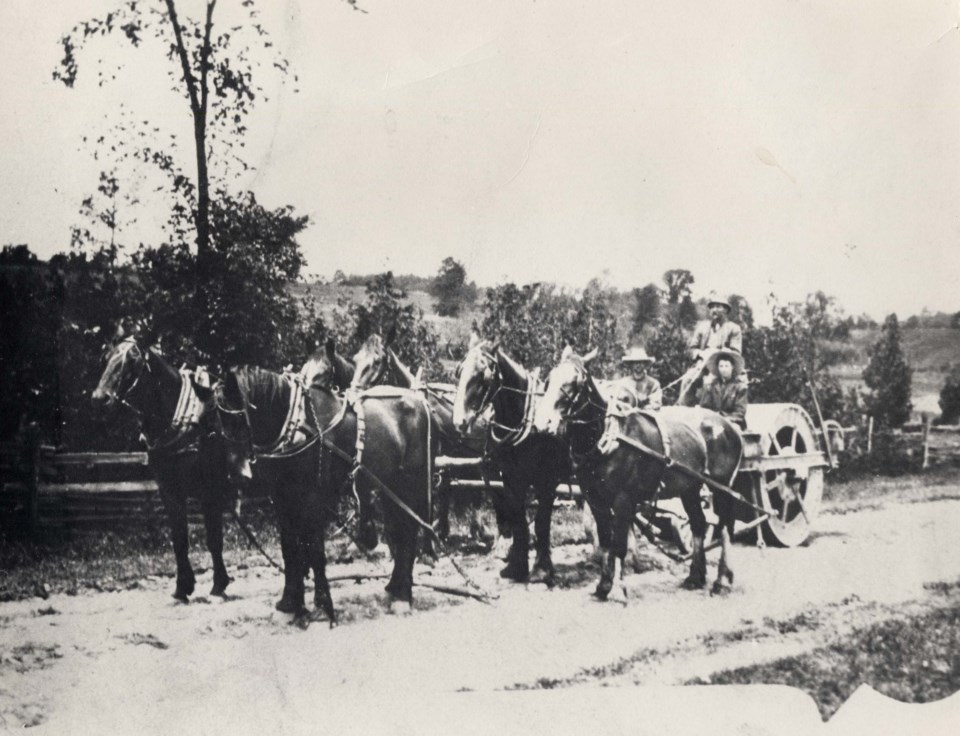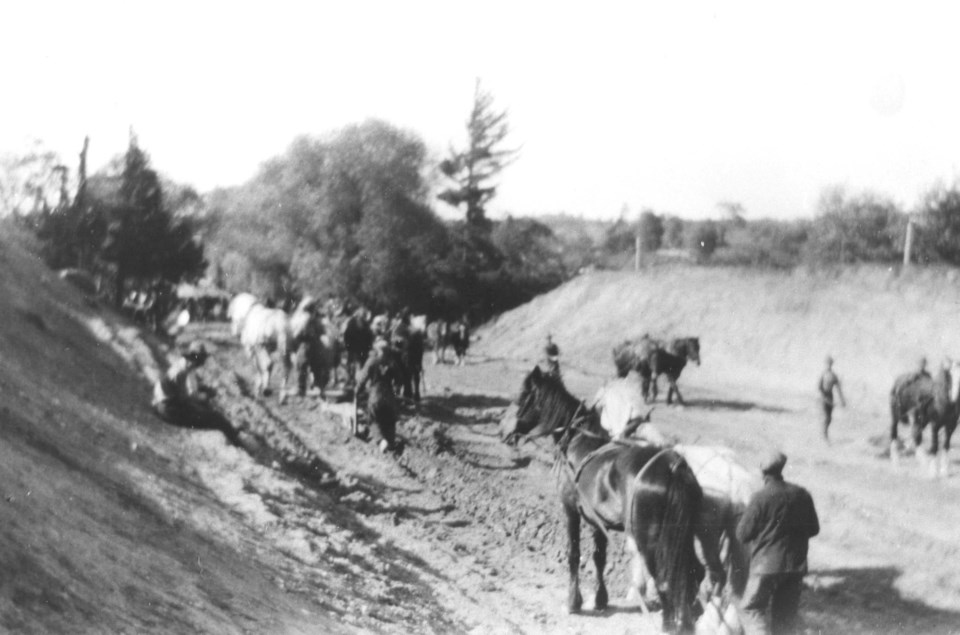Complaining about the state of our roads is nothing new. We’ve been doing it since our towns were born.
But there was a major difference between our rants today and those of yesteryear. In years past, residents would be expected to grab shovels and make the repairs themselves, thanks to the Statute Labour Law.
It wasn’t until the 1920s and the advent of modern machinery that governments began to reluctantly accept responsibility for road repair.
Under the Statute Labour Law, property owners were required to provide at least two days labour per year, and perhaps as much as 12, depending on the assessed value of their property, to maintain any road that fronted their lots.

Statute labour was never popular. Settlers had more than enough work to do already without additional tasks being thrust upon them, and so they reluctantly did the least required of them.
That’s assuming, of course, they even bothered to show up.
Things only got worse when the provincial government passed all responsibilities for road construction and maintenance down to township in the 1880s. Without adequate funds, townships increasingly relied upon statute labour to keep the roads passable.
Generally, neither the workers nor the local path master — an official appointed to oversee the work — knew anything about road construction.
Unsurprisingly, it wasn’t long before roads, often rather primitive at the best of times, were in a sorry state. In the summer, ruts and rocks became the nemesis of wheels and axles. In wet weather, many were washed out or became muddy quagmires the consistency of oatmeal.
Fed-up citizens began pushing their local councils to find a solution. Councils, in turn, pressured the provincial government.
Although it took some time, the government finally listened. In 1900 the first Commissioner of Highways was named. Two years later, the Highway Improvement Act was passed, which set aside money to assist counties in road-construction programs.
For the first time, townships had adequate funding to hire skilled contractors armed with the new machines that were revolutionizing the process of road-building.
Nonetheless, statute labour was still enforced. Farmers were still doing manual labour on roads in lieu of road taxes well into the 1940s.
Many of the roads were drive today have their origins in roads built, improved and maintained by property owners performing statute labour.



